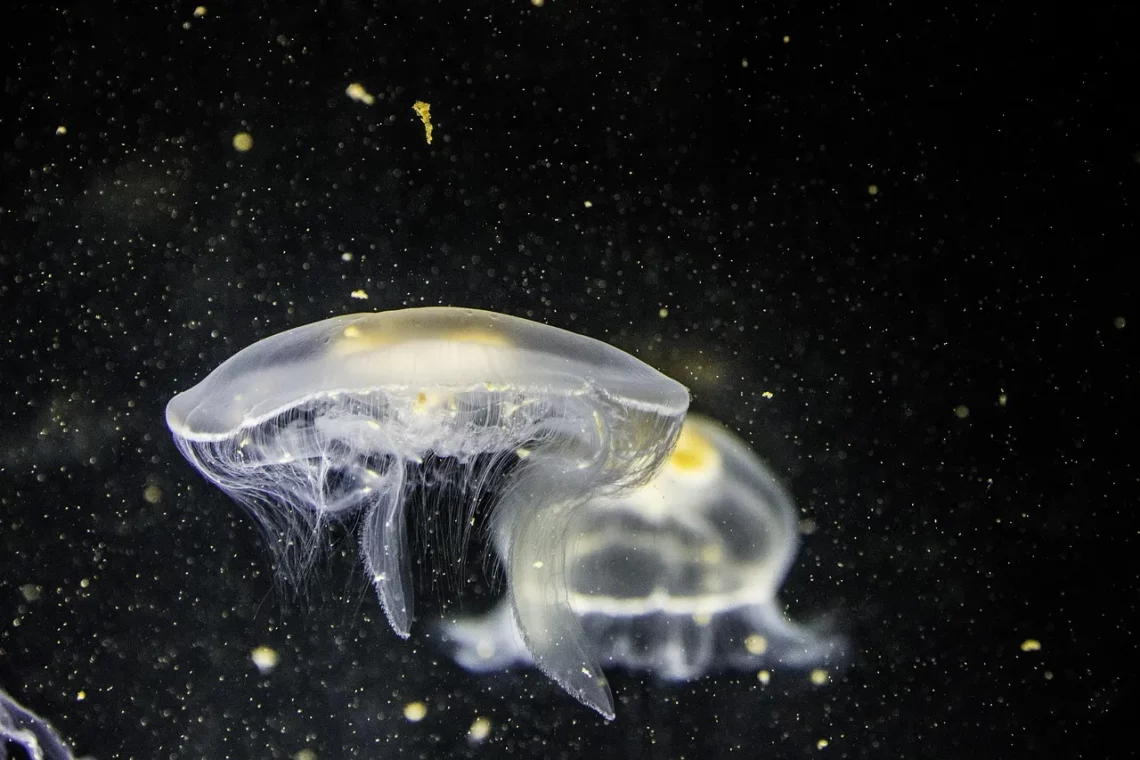
What Do Fish Eat in the Ocean? Exploring Their Diet and Habits
The ocean, a vast and mysterious expanse, is home to an incredible diversity of life, particularly fish. These aquatic creatures are not only fascinating to observe but also play a crucial role in maintaining the delicate balance of marine ecosystems. Understanding what fish eat in the ocean reveals insights into their behaviors, habitats, and the intricate food webs that sustain life beneath the waves. From the shimmering schools of sardines to the majestic movements of sharks, each species has adapted its diet to exploit the resources available in its environment.
Fish exhibit a wide range of feeding strategies and preferences, which can vary significantly depending on their species, size, and habitat. Some fish are opportunistic feeders, consuming whatever food is readily available, while others have specialized diets that reflect their ecological niche. The ocean is a dynamic environment, where available food sources can change with the seasons, water temperature, and other ecological factors. This adaptability is key to the survival of fish in their natural habitat, influencing not just their health and growth but also their reproductive success.
Delving into the diet of these remarkable creatures allows us to appreciate the complexity of ocean life and the interdependence of species. By exploring the various types of food fish consume, we can gain a deeper understanding of their ecological roles and the importance of preserving our oceans for future generations.
The Different Types of Fish Diets
Fish diets can be broadly categorized into three primary types: herbivorous, carnivorous, and omnivorous. Each category reflects the distinct feeding habits and preferences of different fish species, shaped by their evolutionary adaptations and ecological niches.
Herbivorous fish primarily consume plant materials, including algae, seaweed, and phytoplankton. These fish play a vital role in maintaining the health of coral reefs and seagrass beds by grazing on algae, which can otherwise overwhelm these ecosystems if left unchecked. Species such as parrotfish and surgeonfish have evolved specialized teeth and digestive systems to effectively process tough plant matter. Parrotfish, for instance, have beak-like jaws that allow them to scrape algae off rocks and coral surfaces. Their feeding habits contribute to the overall health of reefs, as they prevent algae overgrowth that can smother coral.
Carnivorous fish, on the other hand, primarily feed on other animals, including smaller fish, crustaceans, and mollusks. These predators are essential for maintaining the balance of marine ecosystems, as they help control the populations of their prey. Sharks, for example, are apex predators that play a crucial role in regulating the health of fish populations and maintaining biodiversity. Their hunting strategies can vary widely, with some species relying on speed and agility, while others use stealth to ambush their prey. The diet of carnivorous fish is often influenced by their size and habitat, with larger species targeting bigger prey.
Omnivorous fish, as the name suggests, have a more varied diet, consuming both plant and animal matter. This adaptability allows them to thrive in various environments and respond to changing food availability. Species like goldfish and tilapia are known for their omnivorous feeding habits, which can include anything from algae and detritus to small invertebrates. Their flexible diet enables them to occupy a range of ecological niches and contributes to the overall resilience of marine ecosystems.
Understanding these dietary categories not only highlights the diversity of fish feeding habits but also underscores the importance of ecological interactions in the ocean. The interplay between herbivorous, carnivorous, and omnivorous fish creates a dynamic food web that sustains life in the marine environment.
Feeding Habits and Adaptations
The feeding habits of fish are closely linked to their anatomical and physiological adaptations, which enable them to efficiently capture and process food. Different species have developed unique strategies that reflect their ecological roles and environments.
For instance, many fish possess specialized mouth structures that enhance their feeding efficiency. Fish like angelfish have small, protrusible mouths that allow them to pick at coral and extract small invertebrates. In contrast, fish such as groupers have larger, more powerful jaws that enable them to ambush and swallow larger prey. These adaptations are essential for their survival, as they determine their feeding efficiency and success in capturing food.
Another fascinating aspect of fish feeding behavior is the use of social strategies. Some species, like certain types of wrasses, engage in cooperative feeding, where groups of fish work together to herd prey into tight clusters, making it easier for individuals to capture their share. This social behavior not only increases their feeding success but also fosters a sense of community within their species.
Fish also exhibit various foraging behaviors based on their environment. For example, reef fish may forage among the crevices of coral structures, while open-water fish may engage in pelagic feeding, where they swim through the water column to catch plankton or smaller fish. The ability to adapt their foraging strategies to different habitats is crucial for their survival, particularly in a world where food sources can be unpredictable.
Seasonal changes can also impact fish feeding habits. Many fish species exhibit migratory behavior in search of food, following seasonal blooms of plankton or spawning events of smaller fish. This migration is often driven by environmental factors such as water temperature and currents, highlighting the interconnectedness of marine life and the need for adaptability.
Through their remarkable adaptations and varied feeding habits, fish demonstrate the intricate balance of life in the ocean. Understanding these behaviors not only deepens our appreciation for marine biodiversity but also emphasizes the importance of preserving these ecosystems for future generations.
The Impact of Human Activity on Fish Diets
Human activities have had a profound impact on marine ecosystems, influencing the diets and feeding behaviors of fish in numerous ways. Overfishing, pollution, and habitat destruction are just a few of the challenges facing fish populations today.
Overfishing has led to significant declines in certain fish species, disrupting the natural balance of marine food webs. When key predator species are removed from the ecosystem, it can lead to an overpopulation of prey species, which in turn can result in habitat degradation. For example, the decline of predatory fish like sharks has been linked to increases in smaller fish populations, which can overgraze seagrass beds and coral reefs. This imbalance can have cascading effects on the entire ecosystem, affecting not only fish but also the myriad organisms that depend on these habitats.
Pollution, particularly from agricultural runoff and plastic waste, has also altered the diets of many fish species. Contaminants can accumulate in the food chain, affecting the health of fish and their reproductive success. Additionally, the ingestion of plastic debris can lead to physical harm and malnutrition, as fish may consume microplastics instead of their natural food sources. This not only poses a threat to individual fish but also raises concerns about the safety of seafood for human consumption.
Moreover, habitat destruction, such as the degradation of coral reefs and mangroves, has a direct impact on fish diets. These habitats provide essential breeding and feeding grounds for many species. The loss of these critical ecosystems can limit food availability and disrupt the natural feeding behaviors of fish, leading to declines in populations.
Conservation efforts aimed at protecting marine habitats and regulating fishing practices are essential for maintaining healthy fish populations and ensuring the sustainability of ocean ecosystems. By understanding the impacts of human activity on fish diets, we can take informed actions to mitigate these effects and promote the health of our oceans.
In conclusion, the diets of fish in the ocean are as diverse as the species themselves, shaped by their adaptations, behaviors, and environmental factors. Understanding these diets and the impacts of human activity is crucial for the conservation of marine life. By fostering a deeper appreciation for the intricate relationships within ocean ecosystems, we can work towards preserving these vital resources for future generations.
**Disclaimer**: This article is for informational purposes only and should not be considered medical advice. For any health-related concerns, please consult a qualified healthcare professional.




